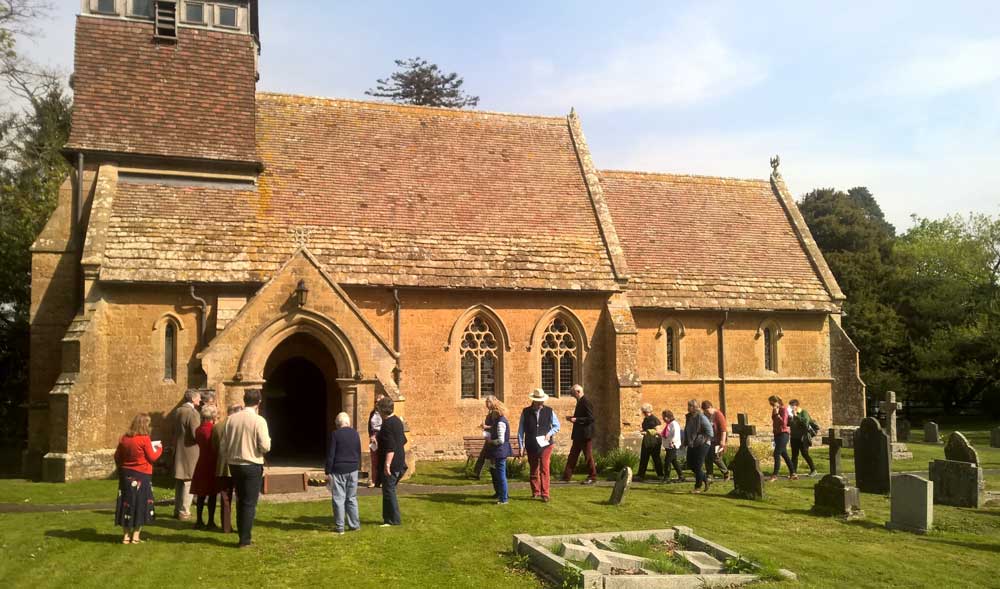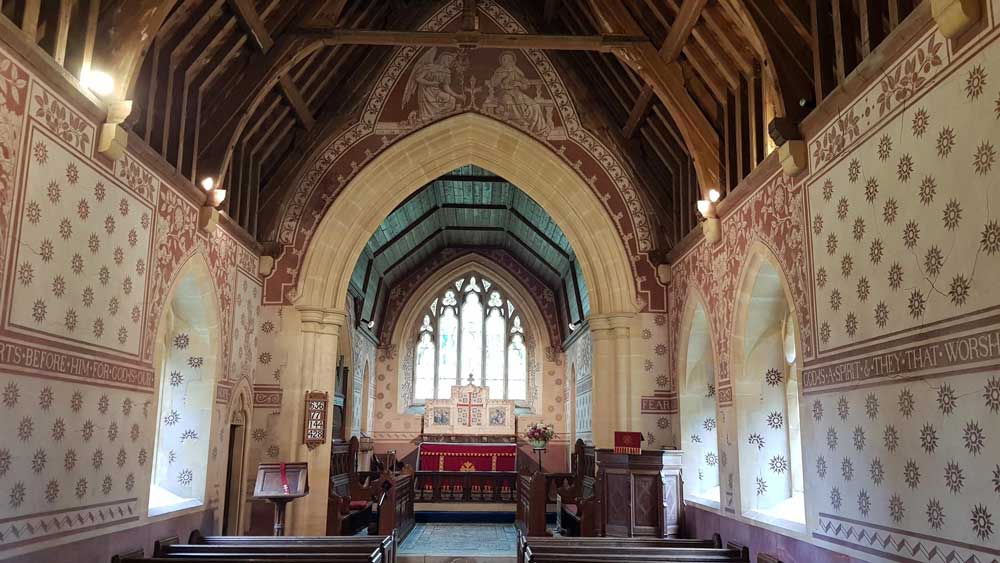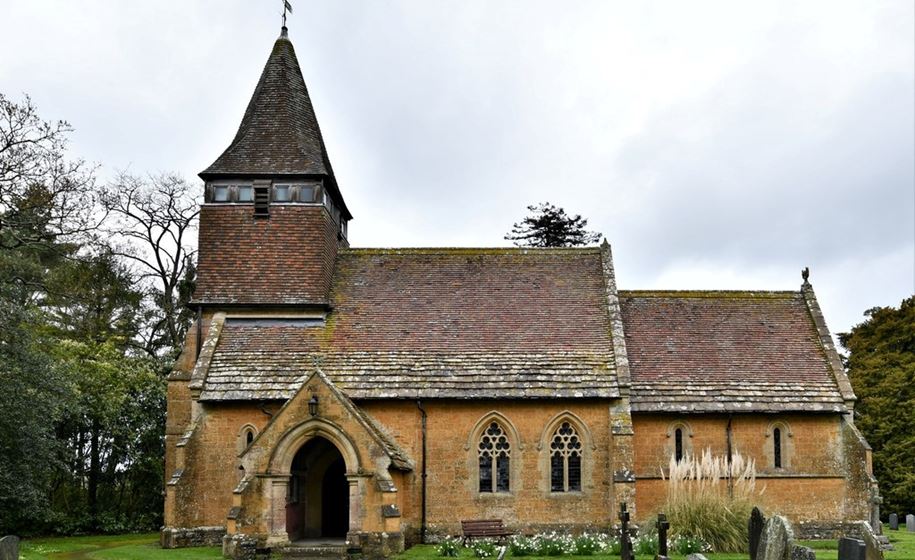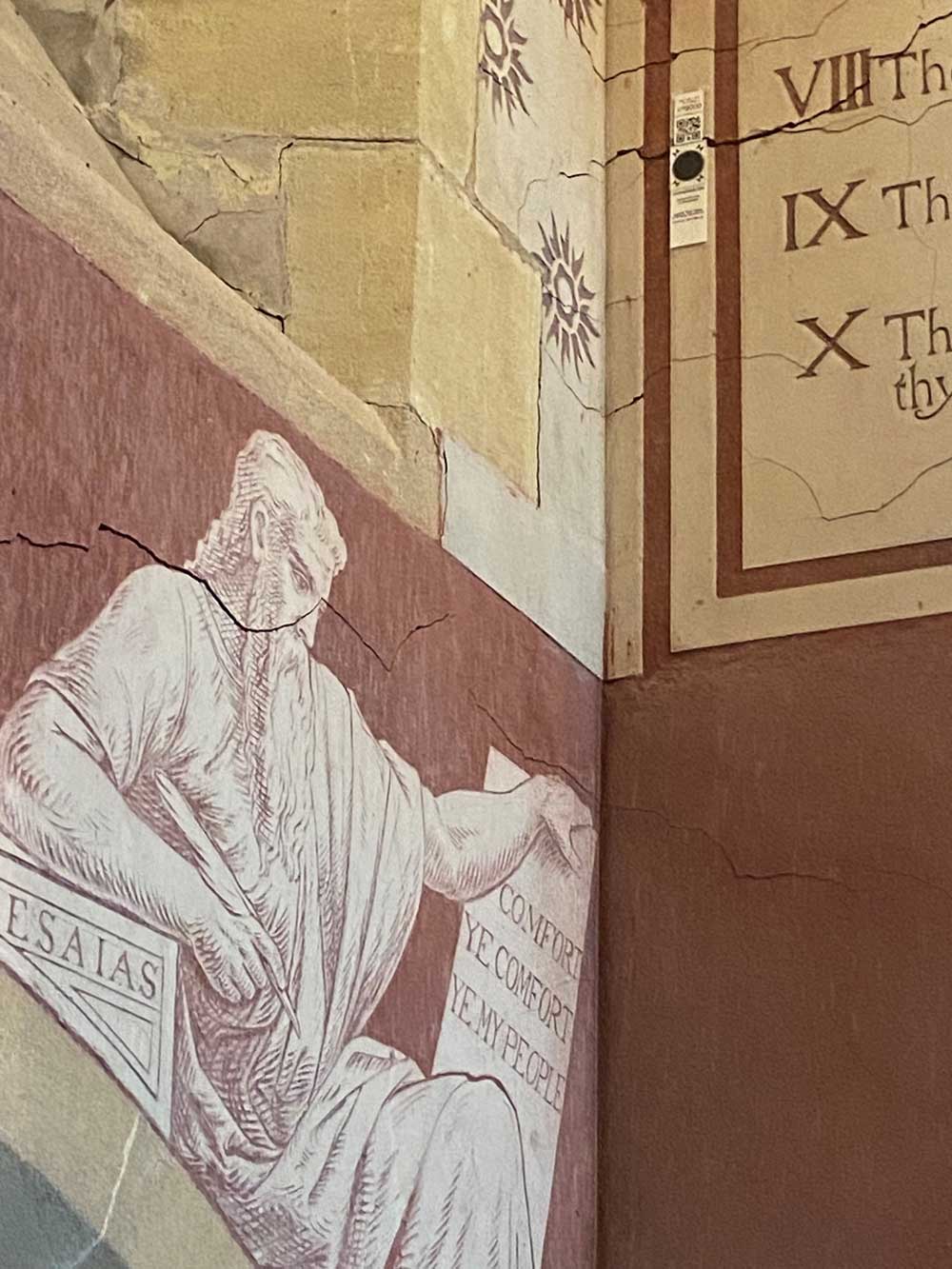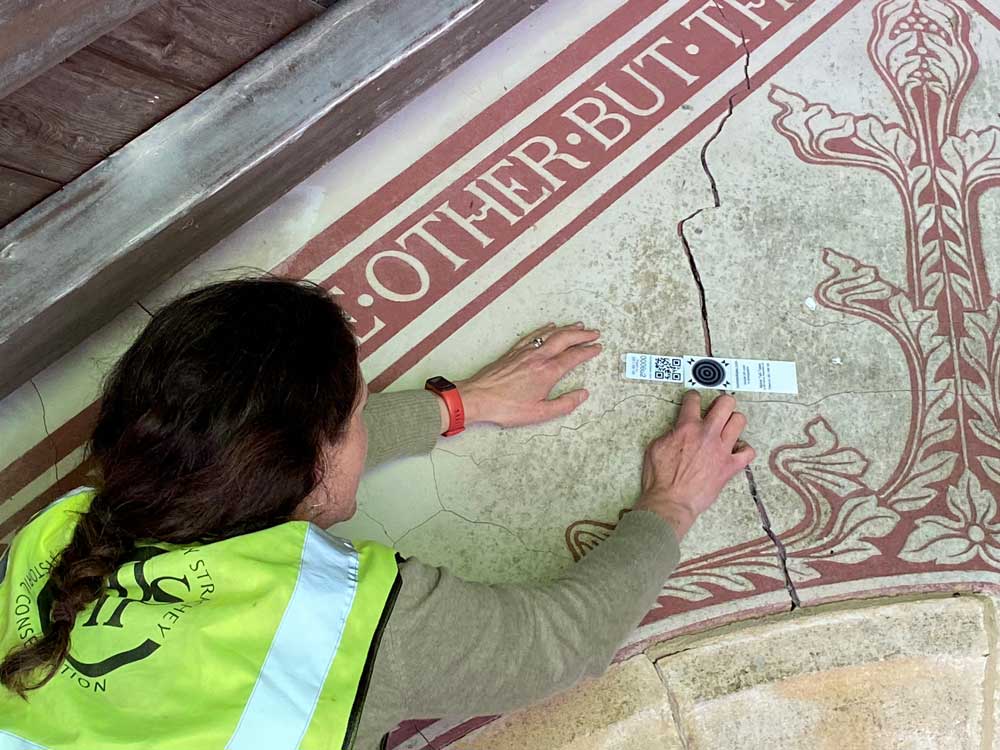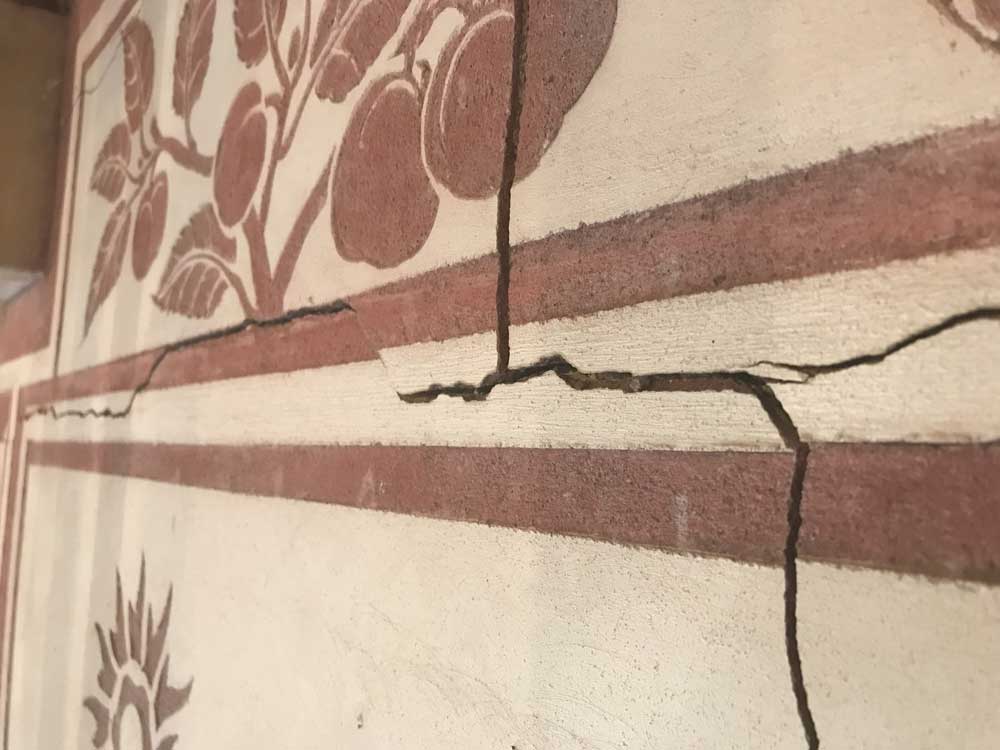Urgent Repairs to St Peter's Church, Hornblotton, Somerset Are Complete
An emergency grant of £52,850 has saved the nave roof of St Peter, Hornblotton, damaged by a storm in December 2022.
However, further major repairs are needed to this at-risk church and its important Arts and Crafts interiors.
Our original programme of work for St Peter’s began with the repair of the chancel roof and east window in 2021 with support from Historic England’s COVID-19 Emergency Fund. But the storm damage to the nave roof in December 2022 meant we had to rethink that programme and act quickly to protect the church and its remarkable interior. We’re delighted that the work has been completed in just a few months.
Following wind and heavy rain on 23 December 2022, the nave roof of Grade I listed St Peter's church in Hornblotton was severely damaged, bringing forward planned works to the building.
The storm dislodged a large area of clay roof tiles, resulting in water running into the nave. The church was closed, and a temporary tarpaulin was secured to prevent further damage to the building's important Arts and Crafts interior.
Unusually, Historic England agreed to fund the full repair of the nave roof.
The circumstances at St Peter’s were exceptional. We were pleased to be able to step in and help secure the nave roof.
St Peter's, Hornblotton
Please click on the gallery images to enlarge.
A pioneering Arts and Crafts church
St Peter's was built between 1872 and 1874 by Sir T G Jackson for Rector Geoffrey Thring to replace an earlier church on the same site. It remains virtually unaltered and a rare example of Jackson's church design. It was listed at Grade I in 1961.
Its Gothic Revival style recalls the architecture of English medieval churches, and its fixtures and fittings reflect the Arts and Crafts movement of the late 19th century, which celebrated decorative crafts in reaction to mass-produced goods.
St Peter's tiled reredos (ornamental screen) above the altar is by celebrated designer and potter William de Morgan. Its stained glass is by James Powell and Sons, a company that specialised in church glass and worked closely with leading Arts and Crafts architects and designers.
An important element of St Peter's Arts and Crafts interior is its pioneering 'sgraffito' plasterwork. Literally meaning 'to scratch', sgraffito is created from three coats of plaster: a base coat; a terracotta second coat, and a cream-coloured top coat, which is scratched away to reveal the contrasting red plaster beneath. The scheme at St Peter's was designed and executed by Francis Wormleighton and leading tile designer Owen Gibbons, who had previously helped create sgraffito panels on the School of Mines (now the Henry Cole Wing) at the Victoria and Albert Museum.
The sgraffito covers every surface of the interior of St Peter's with floral and botanical designs, as well as images from the scriptures. It is the earliest example of the technique used in such an ambitious way. Sgraffito became increasingly popular in the 1870s, peaking in the late 1880s and 1890s.
Major repairs are still needed
Now the storm damage has been fixed, the church can once again focus on the major programme of refurbishment needed to secure this important building and its historic interiors. Fundraising is underway.
The vestry and porch roofs now need to be improved, and recent investigations of the bells, the sgraffito wall plaster, and the window glass show that they also require conservation and repair. To reflect the fragile condition of the church, St Peter’s was added to Historic England’s Heritage at Risk Register in 2022.
Our church is one of Somerset’s historic gems and much loved by local people and visitors, but it has reached the point where extensive repairs are now needed. We’ll be working hard over the coming years to conserve this beautiful building.

